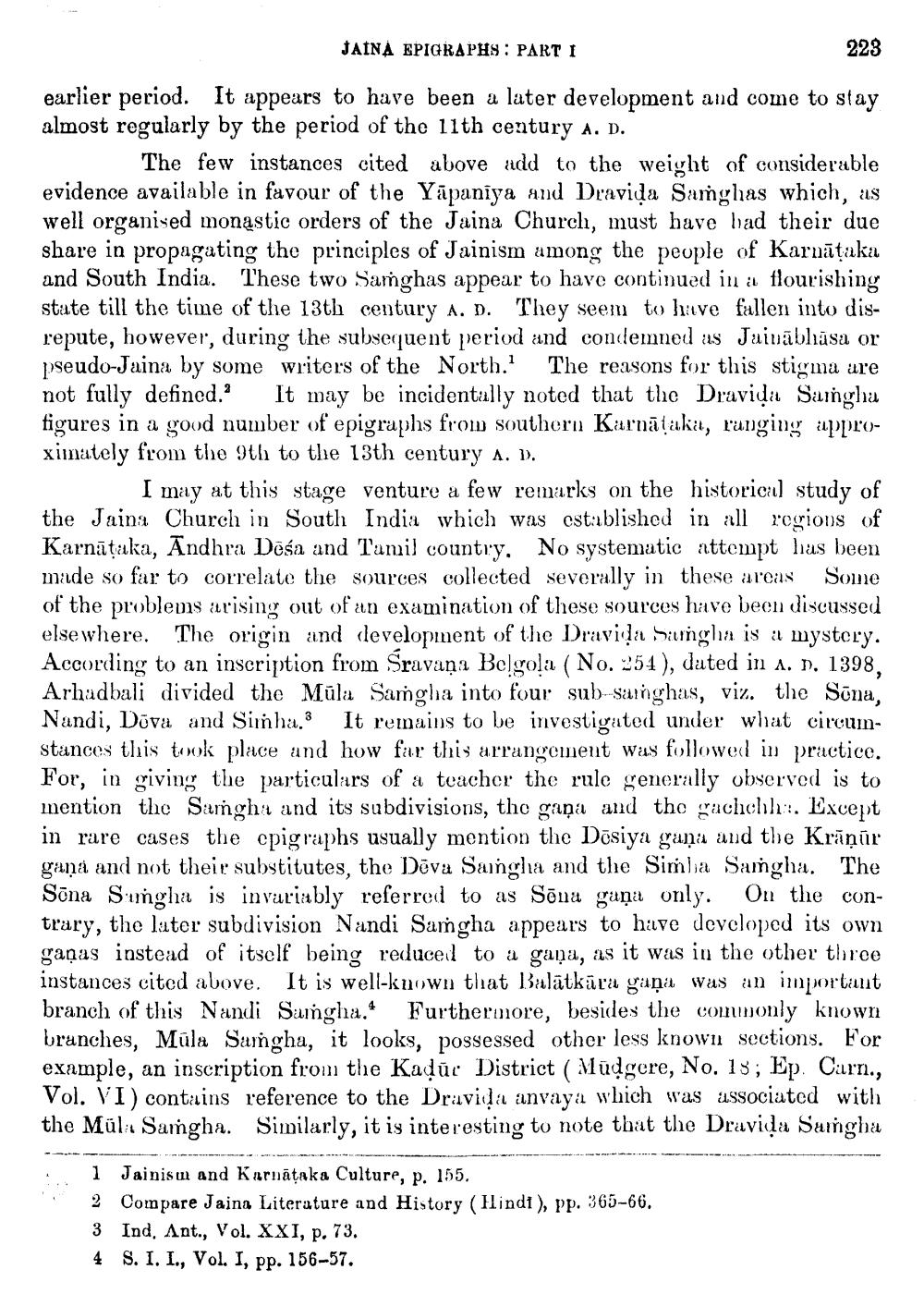________________
JAINA EPIGRAPHS: PART I
223
earlier period. It appears to have been a later development and come to stay almost regularly by the period of the 11th century A. D.
The few instances cited above add to the weight of considerable evidence available in favour of the Yāpaniya and Draviđa Samghas which, as well organised monastic orders of the Jaina Church, must have had their due share in propagating the principles of Jainism among the people of Karnātaka and South India. These two Samghas appear to have continued in it flourishing state till the time of the 13th century A. D. They seem to have fallen into disrepute, however, during the subsequent period and condemned as Juivābhāsa or pseudo-Jaina by some writers of the North. The reasons for this stigma are not fully defined. It may be incidentally noted that the Draviđa Sangha figures in a good number of epigraphs from southern Karnātakat, ranging approximately from the 9th to the 13th century A. 1).
I may at this stage venture a few remarks on the historical study of the Jaina Church in South India which was est:ablished in all regions of Karnātaka, Andhra Deśa and Tamil country. No systematic attempt has been made so far to correlate the sources collected severally in these areas. Some of the problems arising out of an examination of these sources have been discussed elsewhere. The origin and development of the Dravida Sangha is a mystery. According to an inscription from Sravana Belgola ( No. 254), dated in a. n. 1398, Arhadbali divided the Müla Samgha into four sub-sainghas, viz. the Sõna, Nandi, Dova and Simha. It remains to be investigated under what circumstances this took place and how far this arrangement was followed in practice. For, in giving the particulars of a teacher the rule generally observed is to mention the Sangha and its subdivisions, the gaña and the gachchli. Except in rare cases the cpigraphs usually mention the Dosiya gana and the Krāņur gana and not their substitutes, the Dēva Sangha and the Simla Samgha. The Sõna Sugha is invariably referred to as Sēna gaña only. On the contrary, the later subdivision Nandi Samgha appears to have developed its own gaņas instead of itself being reduced to a gana, as it was in the other three instances cited above. It is well-known that Bulātkāra yaņa was an important branch of this Nandi Sumgha. Furthermore, besides the commonly known branches, Mula Samgha, it looks, possessed other less known sections. For example, an inscription from the Kadūr District ( Müdgere, No. 18; Ep. Carn., Vol. VI) contains reference to the Dravida anvaya which was associated with the Mül: Samgha. Similarly, it is interesting to note that the Dravida Saingha
......
1 Jainism and Karnataka Culture, p. 155. 2 Compare Jaina Literature and History (Hindi), pp. 365-66. 3 Ind. Ant., Vol. XXI, p. 73. 4 S. I. I., Vol. I, pp. 156-57.




